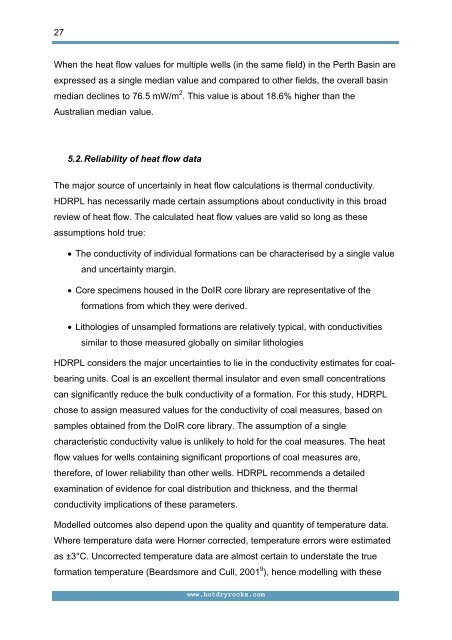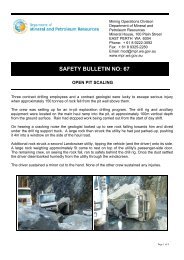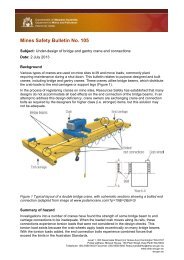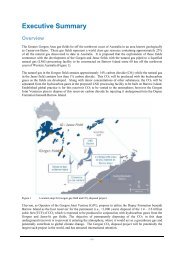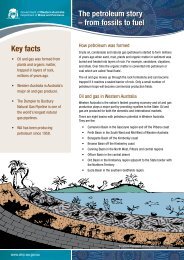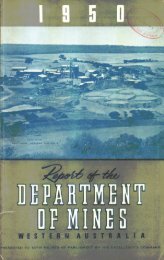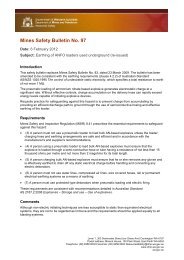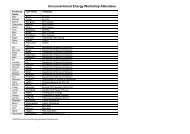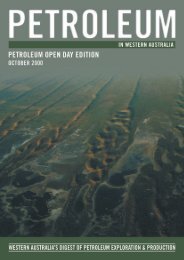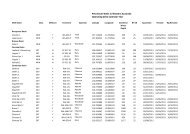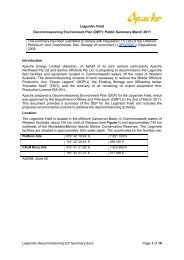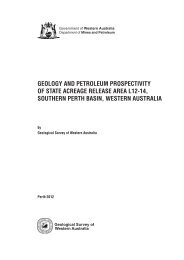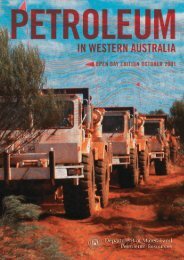Geothermal Energy Potential in Selected Areas of Western Australia ...
Geothermal Energy Potential in Selected Areas of Western Australia ...
Geothermal Energy Potential in Selected Areas of Western Australia ...
You also want an ePaper? Increase the reach of your titles
YUMPU automatically turns print PDFs into web optimized ePapers that Google loves.
27<br />
When the heat flow values for multiple wells (<strong>in</strong> the same field) <strong>in</strong> the Perth Bas<strong>in</strong><br />
are<br />
expressed as a s<strong>in</strong>gle median value and compared to other fields, the overall bas<strong>in</strong><br />
median decl<strong>in</strong>es to 76.5 mW/m 2 . This value is about 18.6% higher than the<br />
<strong>Australia</strong>n median value.<br />
5.2. Reliability <strong>of</strong> heat flow data<br />
The major source <strong>of</strong> uncerta<strong>in</strong>ly <strong>in</strong> heat flow calculations is thermal conductivity.<br />
HDRPL has necessarily made certa<strong>in</strong> assumptions about conductivity <strong>in</strong> this broad<br />
review <strong>of</strong> heat flow. The calculated heat flow values are valid so long as these<br />
assumptions hold true:<br />
• The conductivity <strong>of</strong> <strong>in</strong>dividual formations can be characterised by a s<strong>in</strong>gle value<br />
and uncerta<strong>in</strong>ty marg<strong>in</strong>.<br />
• Core specimens housed <strong>in</strong> the DoIR core library are representative <strong>of</strong> the<br />
formations from which they were derived.<br />
• Lithologies <strong>of</strong> unsampled formations are relatively typical, with conductivities<br />
similar to those measured globally on similar lithologies<br />
HDRPL considers the major uncerta<strong>in</strong>ties to lie <strong>in</strong> the conductivity estimates for coalbear<strong>in</strong>g<br />
units. Coal is an excellent thermal <strong>in</strong>sulator and even small concentrations<br />
can significantly reduce the bulk conductivity <strong>of</strong> a formation. For this study, HDRPL<br />
chose to assign measured values for the conductivity <strong>of</strong> coal measures, based on<br />
samples obta<strong>in</strong>ed from the DoIR core library. The assumption <strong>of</strong> a s<strong>in</strong>gle<br />
characteristic conductivity value is unlikely to hold for the coal measures. The heat<br />
flow values for wells conta<strong>in</strong><strong>in</strong>g significant proportions <strong>of</strong> coal measures are,<br />
therefore, <strong>of</strong> lower reliability than other wells. HDRPL recommends a detailed<br />
exam<strong>in</strong>ation <strong>of</strong> evidence for coal distribution and thickness, and the thermal<br />
conductivity implications <strong>of</strong> these parameters.<br />
almost certa<strong>in</strong> to understate the true<br />
formation temperature (Beardsmore and Cull, 2001 9 Modelled outcomes also depend upon the quality and quantity <strong>of</strong> temperature data.<br />
Where temperature data were Horner corrected, temperature errors were estimated<br />
as ±3°C. Uncorrected temperature data are<br />
), hence modell<strong>in</strong>g with these<br />
www.hotdryrocks.com


